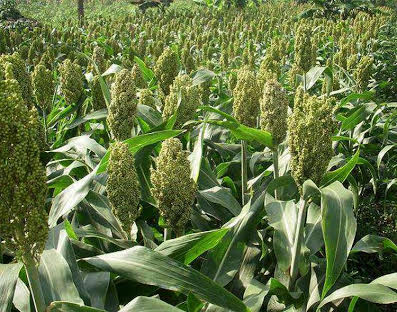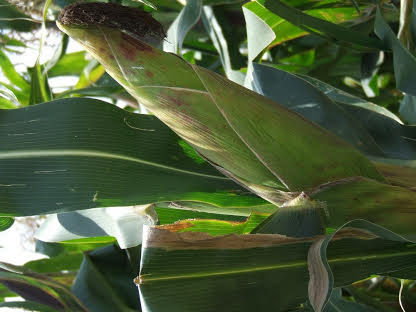Agriculture is increasingly finding itself at the mercy of climate change. Too much rain, too little rain or rain at the wrong season, prolonged dry seasons, disease and pests infestation are leaving distraught farmers with no options in their hands.
This is the situation that faced farmers in many regions in Kenya at the beginning of the year.
In Kenya and the entire African continent, Maize is the staple food for over 300 million people in the continent according to food analysts. But agricultural experts say that in coming few years, drought and rising temperatures could render 40 percent of the continent’s maize growing areas unsuitable for varieties of maize available today.
What viable measures can farmers across different regions in the world take to cushion themselves against these adverse effects of the changing climate? According to the “2014 African Agriculture Status Report” by the Alliance for a Green Revolution in Africa AGRA, climate smart agriculture (CSA) is a major intervention that could reduce threats of climate change and increase farmers’ resilience.
Food and Agricultural Organisation FAO defines climate smart agriculture (CSA) as consisting of; sustainable increasing agricultural productivity and incomes, adapting and building resilience to climate change and reducing or removing greenhouse gas emission where possible.
According to AGRA there are several measures that will ensure strong resilience for farmers especially in Africa.
One of them is Inclusive partnerships involving governments, private sector agribusinesses and development organizations.
This, AGRA says will be instrumental in the development, dissemination, adoption, and monitoring and evaluation of (CSA) technologies.
Harnessing opportunities arising from South-South cooperation and regional integration in fostering partnerships and building capacity in (CSA) is another key measure. Indigenous or traditional crop practices also need to be recognized and be supported.
Indeed, Dr Charles Kariuki who is the director of Kenya Agricultural Research Institute KARI in Eastern Province supports this view. He notes that traditional crop varieties and practices contribute significantly towards food security as they adapt well to a cross range of climate variability. DrKariuki states that the traditional crops are no longer referred to as orphan crops but are now known as high yield traditional crops.
 He says governments in Africa should support and encourage farmers to embrace root tubers like cassava, yams, coco yams, sweet potato, African leafy vegetables, legumes and cereals such as sorghum and millet.
He says governments in Africa should support and encourage farmers to embrace root tubers like cassava, yams, coco yams, sweet potato, African leafy vegetables, legumes and cereals such as sorghum and millet.
Traditional knowledge and practice has been hailed as one of the technology that should be used as an intervention in combating climate change.
During last year’s UN Climate Conference in Poland, parties to the United Nations Convention on Climate Change (UNFCCC) noted that the member governments had completed work on Climate Technology Center and Network (CTCN).
The CTCN was designed to provide a channel through which developing nations could forward requests for advice and assistance on the transfer of technology.
But AGRA observes that the dominant top-down ‘transfer of technology’ model has largely excluded farmers from the development and dissemination of new technologies and led to low adoption of (CSA) technologies. AGRA president Jane Karuku emphasizes on Africans-led technology transfer process. “African farmers are aware of the challenges they face, unpredictability of rains, rising temperatures, diseases and pests infestations; all these are a manifestation of climate change”Karuku states.
The transfer of technology is just one of the challenges facing development of climate risk-management strategies for agriculture. Other challenges include;variability of rainfall, limited consumer awareness, low financial literacy levels, poor public sector involvement, data scarcity and the weak technical capacity of African weather stations.
According to a 2013 report“Climate Smart Agriculture Success Stories” farming must become resilient to ensure a food-secure future. The report by Consultative Group on International Agriculture Research (CGIAR) in cooperation with International Center for Tropical Agriculture (ICTA) underscores the need for climate smart agriculture.
Indeed, in Kenya thousands of maize growing farmers are already seeing the urgent need to start refocusing their agricultural practices. Severe shortage of rain hit this east African country between the months of March and June. During this period, farmers always expect normal rains for them to plant maize and a variety of other crops.
Besides rainfall shortage, a strange disease that has struck maize crop at flowery stage in high yielding regions has further worsened the situation. Severe droughts in the Sub-Saharan Africa, erratic weather patterns and outbreaks of crop diseases in Kenya to floods in Tanzania, are just a few challenges that are increasingly becoming common. However, the CGIAR report shows that farmers across the world are adopting different practices that are promoting climate smart agriculture.
 Drought-tolerant maize for security for millions of African farmers is one of the practices. Since 2006, the Drought Tolerant Maize for Africa (DTMA) Initiative has developed more than 100 new varieties of maize varieties and hybrids. These varieties have been released in 13 countries in Africa. More than 2 million small holder farmers in sub-Saharan Africa are now growing these varieties.
Drought-tolerant maize for security for millions of African farmers is one of the practices. Since 2006, the Drought Tolerant Maize for Africa (DTMA) Initiative has developed more than 100 new varieties of maize varieties and hybrids. These varieties have been released in 13 countries in Africa. More than 2 million small holder farmers in sub-Saharan Africa are now growing these varieties.
Farmers are now reporting 20-30% increase in crop yields above what they would have got with unimproved varieties. In China, Grain for Green Programme(GGP) was initiated in 1999 and implemented countrywide in 2002. It involved paying farmers not to cultivate steep slopes and to restore forests on hillsides and eroded grasslands.
Farmers are supplied with tree seedlings and receive annual grain and cash payments for each hectare of set-aside land that they plant with trees. With a budget of around US$40 billion nation-wide, the scheme aimed to convert about 15 million ha of farmland into forest and grassland, and 17 million ha of eroded wasteland (grassland) into forest by 2010.
The (GGP) initiative has had considerable impact; over 2.5 million households have participated converting 2 million ha of cropped hillside to grassland or forest. Water harvesting in the Sahel region (the land stretching across Africa below the Sahara) has seen a yield increase of 400kg/ha.
Consequently, 80, 000 to 120, 000 tonnes more cereal grain are being produced each year. These are enough to feed 500, 000 to 750, 000 people in the Sahel. Other smart practices include Ethiopia’s productive safety netprogramm (PSNP) and household asset building programme (HABP) that have improved food security for nearly 8 million households across the country.
Both (PSNP) and the (HABP) have improved the immediate food security of households, strengthened their resilience to shocks such as droughts and floods, and increased their ability to adapt to longer-term climate change.
In India, the Integrated Agro-meteorological Advisory Service (IAAS) is boosting crop and livestock production. Agricultural advisories are reaching 2.5 million smallholder farmers in India. Various studies have shown that farmers receiving the (IAAS) have yields that are 10-15% higher than farmers not receiving. The (IAAS) has had an economic impact of US$10 billion since it was introduce in 2007.
Other initiatives include Kenyan farmers in Kasigau region in the coast, Kisumu and Kitale countiesselling carbon credits to the World Bank’s bio-carbon fund. This involves farmers being paid for sustainable agricultural and land management.
In Kasigau forest, farmers abandoned forest destruction and are now earning up to US$3 million annually from selling carbon credits to international corporations. This has saved up to 500, 000 acres of forest from continued destruction.
Farmers use the carbon credits money to initiate sustainable development and farming projects which boost their nutrition and financial status.
Other notable smart initiatives include community forest management in Tanzania, a $16 billion fund by Brazilian government to encourage farmers to adopt low carbon agriculture and the bottom up land management through Community Action Plan in Niger.
During the last year’s UNFCCC conference in Poland, participants reiterated that the developed countries had pledged over 100 million dollars to add to the Adaptation Fund to finance national projects in developing countries.
With this reality of climate change among farmers, the stakeholders who will be meeting again this year for climate summits in New York and Lima, Peru must focus on accelerating practical adaptation interventions and fulfilling their financial and political pledges to cushion farmers from adverse climatic conditions.